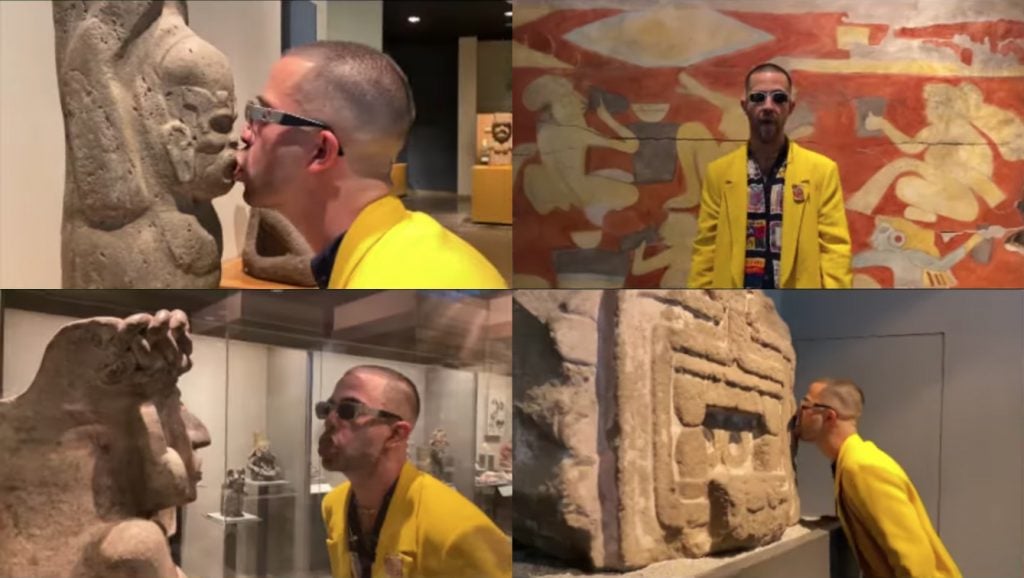Museums & Institutions
A Performance Artist Kissed Ancient Objects at a Mexican Museum to Protest the Selling of Looted Artifacts Abroad
Pepx Romero's actions went unnoticed by museum security staff.

Pepx Romero's actions went unnoticed by museum security staff.

Taylor Dafoe

Last month, a performance artist kissed and licked some 30 pre-Hispanic objects on view at Mexico’s National Institute of Anthropology and History (INAH)—and did so without attracting notice from the museum’s security staff.
The performance, carried out by artist Pepx Romero, was meant to draw attention to the selling of looted ancient artifacts abroad, particularly at auction houses in France.
“The action of kissing and licking the objects shows that the pre-Hispanic objects are objects of desire in the context of auctions in France,” the artist, who runs a queer arts collective called Traición, explained to Hyperallergic.
“France, a country known as the luxury capital of the world, has private property laws within its legislation that allow the shameless sale of the historical past of cultures of, primarily, less developed countries,” he went on. “The public auction of these valuable objects has allowed monetary speculation on these important objects from different cultures since the 1940s, vandalizing and stripping these objects of their historical and symbolic value, turning them into simple objects of decoration.”
On March 31, Romero wandered around the INAH for an hour, planting their tongue on lips on stone sculptures in historically-themed galleries dedicated to the Gulf, Mexica, Teotihuacán, Toltec, and Oaxaca periods, while three partners kept a lookout for security guards. Romero’s actions were filmed and compiled in a video that promptly went viral online.
The video was screened as part of a larger Traición performance at the Ceremonia music festival held in Mexico City earlier this month.
“It’s a provocation to attract attention to this situation that is happening in the auctions,” the artist says in voiceover accompanying one of the videos. “There have been auctions this year and they haven’t been able to be stopped. French laws allow this disgrace…. They’re prostituting our heritage in front of our noses.”
In a press conference, the INAH’s director, Diego Prieto, said that none of the artifacts Romero interacted with were damaged during the performance. Characterizing the museum as the “safest” in the country, the said that there was “no failure in the security systems” of the institution.
“In no museum in the world does each visitor have a guard by their side,” Prieto said. “Approaching a piece at such a close distance is not correct, but in any museum in the world it is possible.”
The sale of pre-Hispanic artifacts abroad has drawn increased attention in recent years as Mexico seeks to bring its heritage home.
In January, prior to an auction of cultural artifacts planned in Paris, members of the Mexican government launched a social media campaign called “Mi Patrimonio No Se Vende (“My Heritage Is Not For Sale”).
In February of this year, Mexican president Andrés Manuel López Obrador spoke out against the sales of pre-Hispanic relics in France, and ordered the INAH to stop responding to auction houses’ requests for information on the objects.